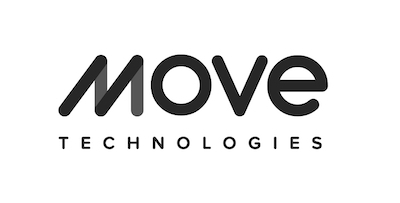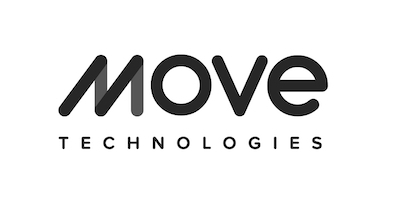Having spoken to operators across the industry, we've noticed five common mistakes with virtual fitness strategy execution that can easily be rectified.
And, if corrected, they will make a big difference to your bottom line.
5 common virtual fitness strategy mistakes you may be making
1. Treating physical and digital as two separate things - at the expense of your brand
The shutdowns over 2020 and now into 2021 caused many a knee-jerk reaction.
With revenues suddenly turned off at the tap, many operators who previously hadn’t needed to (or probably more accurately - thought they hadn’t needed to) bring in a digital offering, found themselves brutally exposed.
In the following headrush, the operators who were able to, sprinted to ship a digital offering for their members.
However, many did so at the expense of the relationship they’d already carefully established with their customers over long periods of time.
How?
Because the digital offering they were now promoting was too different from the experiences their customers were used to - and that they loved.
The new digital offering looked different, felt different and lacked an obvious connection.
This mistake is probably caused by the rush to fill the gap but also, more importantly, because the clubs’ historic reliance on only delivering physical experiences meant they inherently devalued digital.
The lesson
Treat physical and digital as part of the same broader experience that your brand underpins.
2. Underestimating the power of real digital product design
When looking for quick answers to really pressing problems, it’s too easy to land on the solution that presents itself most visibly.
As consumers, our experiences with digital experts like Amazon, Google or Facebook give us a false sense of security that all digital products and brands are as good.
For operators, what that often means is that ‘off-the-shelf’ solutions are taken onboard without enough interrogation.
These solutions can be well branded but almost always lack the sophistication of design that a successful digital product requires.
A successful digital product will engage the user in a variety of ways and react and develop according to the user’s engagement with it. Almost all the off-the-shelf solutions in digital fitness fall down in this respect.
For an effective digital fitness platform, it needs to include triggers, functionality and UX that drive behavioural change, like push notifications and nudges.
It should prompt the user with personalised recommendations based on the data the user has supplied as well as the signals from their activity to date. It should also make use of the pooled intelligence and insight from the rest of its users too. A/B testing and continuous optimisation should be baked in as par for the course.
Some operators have been disappointed by the proportion of their membership base that has engaged with their offering. This is because the off-the-shelf digital bolt-ons they have brought are just not sophisticated enough.
The good news for operators is that the options, like Virtual Studio from Move, are definitely out there.
The lesson
Expert digital product design is essential and will engage more members.
3. Not managing the live experience correctly
We’ve all seen it. Since the pandemic the internet is brimming with examples of Zoom calls going wrong, unwanted interruptions, communication breakdowns and tech fails.
Virtual fitness has been no different. However, there is one regular mistake that clubs have been making which, if rectified, can lead to far better experiences all round and thus, far better engagement and retention levels.
This is the fact that coaching instructors is as important as coaching participants.
Not everyone is a digital expert, instructors can turbo-charge their mastery of the digital classes with a few simple lessons and instructions around key elements like the use of music, camera placement, the use of space and some quickfire checks.
The nature of the classes retain some similar elements to in-person but of course there are some differences. A little coaching in the power of a clear and consistent warm voice, the top and tailing of classes with warm comms and a set-up that allows regular and personal exchanges during the classes can make a world of difference.
The lesson
Prepare your coaches and instructors with digital to the same extent that participants are being coached for their fitness levels.
4. Presuming extra variety will dilute your core offering
We’ve heard this a few times. It’s been a barrier for some operators making them hesitate in integrating a digital aspect to their offering.
The user expectation when it comes to digital is that they will gain access to large libraries of content.
For the operator this makes them concerned that if a user starts to experience a wider variety of activities than that operator can realistically deliver in-person, then they stand to lose that customer.
This is actually a ‘fitness fallacy’.
Variety is a retention-driver not a diminisher. The variety on offer through digital means that customers work out more frequently, feeding their fitness and love of exercise. This in turn means they are more valuable in the long term.
Get the branded experience joined up and correct and the customer will be retained, not lost.
The lesson
Use digital to bring better variety to your offering because it will drive better retention
5. Using virtual to only drive sales, and not retention too
The pandemic has meant that cash flows in health and fitness have experienced a sequence of shockwaves.
For those who have shipped a virtual offering, the emphasis has been on using it to find ways to keep the acquisition line graph vaguely stable.
However, looking at this way only is a false economy.
Instead, investing in the right virtual technology will help you retain existing customers and develop them into more valuable ones. That way, there is clearer ROI.
Offering existing customers free digital content to start with gives you far better leverage to then nudge those customers into a more premium subscription in return for unlimited access.
The customer is retained, the technology deployed is demonstrably valuable and you have a better platform to then look for sales-driving mechanisms too.
The lesson
Don’t fall for the false economy of using virtual to just drive sales; it’s an effective retention tool too.
If you think your business would benefit from an expert virtual offering which avoids these common mistakes, then Virtual Studio from Move can help you.
Find out more about Virtual Studio from Move


.jpg)
